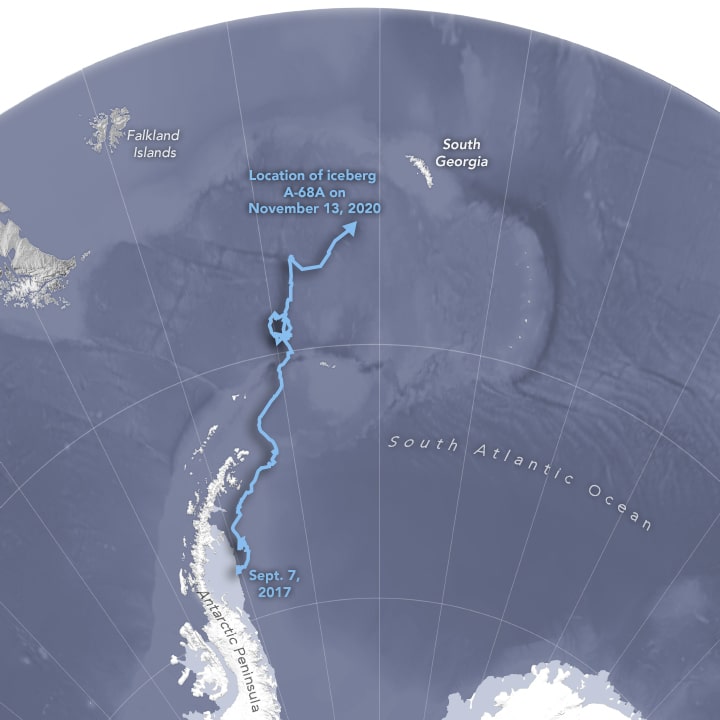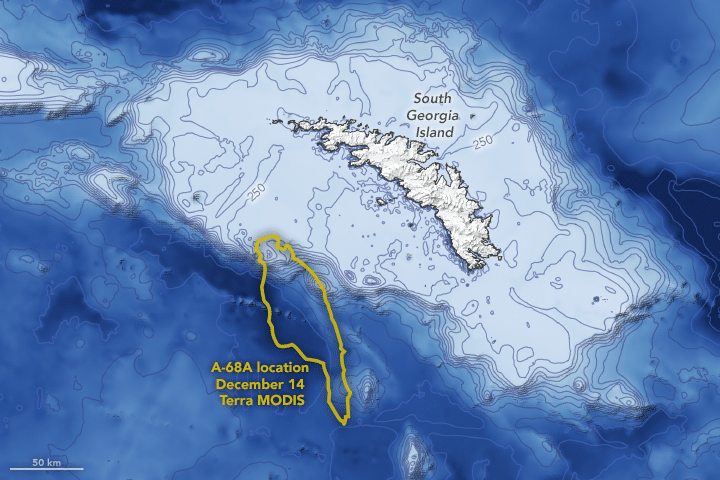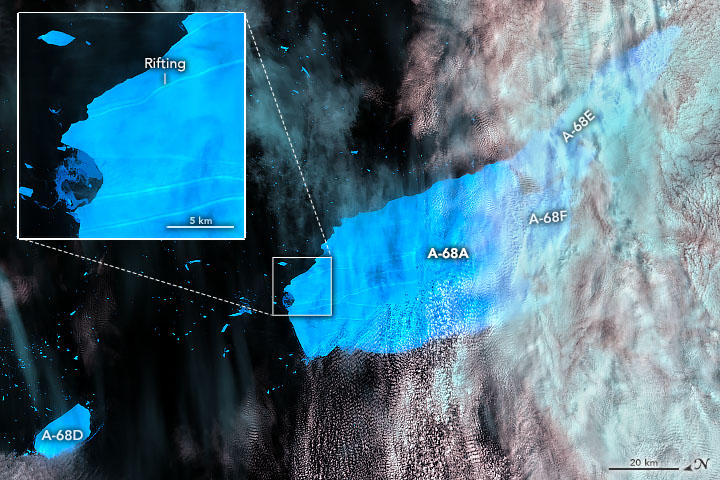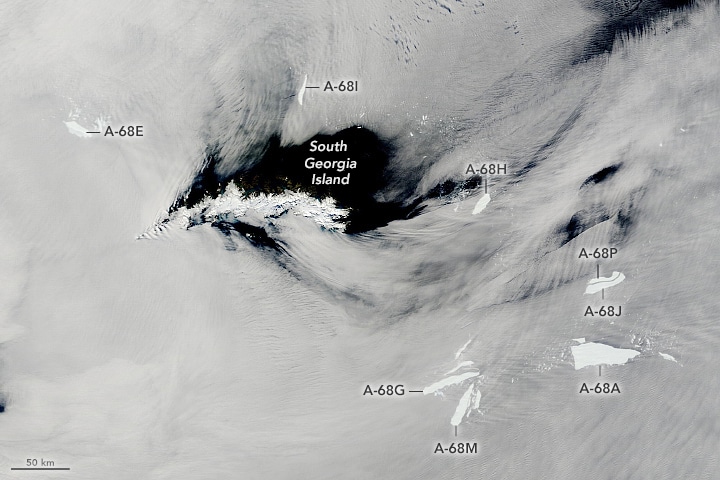Earth.Org brings you a brief overview in pictures of the story of the A68 iceberg that broke off from Antarctica in 2017, and just recently broke up in the southern Antlantic ocean.
—
You may remember last year’s warnings that the largest iceberg in the world, dubbed A68, was slowly drifting toward the South Georgia Island in the southern Atlantic Ocean. This ~4,000 square kilometer piece of land is the most important penguin and seabird breeding area on Earth, with more animals per square foot than any other place during its breeding season.
Some numbers (from Swoop | Antarctica):
- 30 million breeding birds, including 7 million penguins and 250,000 albatrosses
- 2 million fur seals and 50% of the world’s population of southern elephant seals

Source: NASA Earth Observatory
At first, the iceberg moved slowly. After breaking away from the Larsen C Ice Shelf of the Antarctic Peninsula in June 2017, it took a year to move 45km. Its journey truly began a year and a half later, as it cleared the peninsula and began moving northward.

Source: NASA Worldview.
Biologists and conservationists became worried when they saw it was on a collision course with the South Georgia Island, as an iceberg the size of Delaware could have serious effects on the area’s wildlife.

Source: NASA Earth Observatory
The risk was that the iceberg reaches deep enough that it could become stuck, or “grounded” on the shallower waterbed around the Island, blocking penguin and seal foraging routes.

Source: NASA Earth Observatory
Finally, in december 2020, A68 veered around the Island, steering clear of it’s shallow waters. Josh Willis, an oceanographer at NASA’s Jet Propulsion Laboratory, explains that the trillion ton iceberg could only be following ocean currents. The map below shows how A68 rotated clockwise and followed the current parallel to the Island shelf, drifting off southeast.
The ocean current vectors come from a real-time model, which blends various measurements, such as wind, sea surface temperature, and crucially, sea surface height (which isn’t uniformly distributed).

Source: NASA Earth Observatory
Moving northward has brought the iceberg into warmer waters, and over time this affects its integrity. (Relatively) small pieces had already broken off over the course of the story so far, but by the end of december 2020, the iceberg was striated with rifts.

Source: NASA Earth Observatory
Our latest update comes from about a week ago, on February 12th, where the once almighty A68 has now become a confetti of fragments, the largest of which received their own name.

Source: NASA Earth Observatory
They don’t represent any danger as they head off into the great expanse of the Atlantic, as they will melt well before they reach any other shore.
This article was written by Owen Mulhern. Cover picture by Joshua Stevens from NASA.
You ight also like: Africa: Growth and Potential for A Sustainable Future










![The Statistics of Biodiversity Loss [2020 WWF Report]](https://u4d2z7k9.rocketcdn.me/wp-content/uploads/2020/12/lprwinkyTHB-544x306.jpg)





